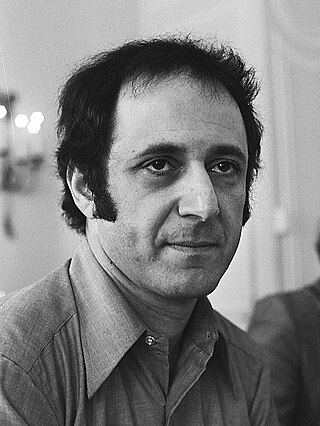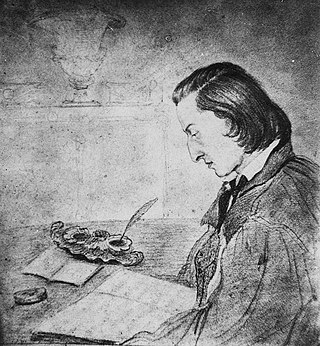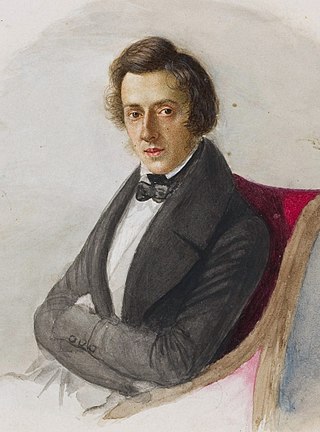Related Research Articles

The time signature is a convention in Western music notation to specify how many of a particular note value are contained in each measure (bar). The time signature is a notational device representing the meter, an auditory feature of the music.
Piano Phase is a minimalist composition by American composer Steve Reich, written in 1967 for two pianos. It is one of his first attempts at applying his "phasing" technique, which he had previously used in the tape pieces It's Gonna Rain (1965) and Come Out (1966), to live performance.
A variety of musical terms are encountered in printed scores, music reviews, and program notes. Most of the terms are Italian, in accordance with the Italian origins of many European musical conventions. Sometimes, the special musical meanings of these phrases differ from the original or current Italian meanings. Most of the other terms are taken from French and German, indicated by Fr. and Ger., respectively.
In music, an accent is an emphasis, stress, or stronger attack placed on a particular note or set of notes, or chord, either as a result of its context or specifically indicated by an accent mark. Accents contribute to the articulation and prosody of a performance of a musical phrase. Accents may be written into a score or part by a composer, or added by the performer as part of their interpretation of a musical piece.
A berceuse is "a musical composition usually in 6
8 time that resembles a lullaby". Otherwise it is typically in triple meter. Tonally most berceuses are simple, often merely alternating tonic and dominant harmonies; since the intended effect is to put a baby to sleep, wild chromaticism would be somewhat inappropriate. Another characteristic of the berceuse, for no reason other than convention, is a tendency to stay on the "flat side"; noted examples including the berceuses by Chopin, who pioneered the form, Liszt, and Balakirev, which are all in D♭.

Six moments musicaux, Op. 16, is a set of solo piano pieces composed by the Russian composer Sergei Rachmaninoff between October and December 1896. Each Moment musical reproduces a musical form characteristic of a previous musical era. The forms that appear in Rachmaninoff's incarnation are the nocturne, song without words, barcarolle, virtuoso étude, and theme and variations.
Tempo rubato is a musical term referring to expressive and rhythmic freedom by a slight speeding up and then slowing down of the tempo of a piece at the discretion of the soloist or the conductor. Rubato is an expressive shaping of music that is a part of phrasing.

Six Pianos is a minimalist piece for six pianos by the American composer Steve Reich. It was completed in March 1973. He also composed a variation for six marimbas, called Six Marimbas, in 1986. The world première performance of Six Pianos was in May 1973 at the John Weber Gallery in New York City. The European première took place in January the next year in Stuttgart, Germany.
Three Preludes is a collection of short piano pieces by George Gershwin, which were first performed by the composer at the Roosevelt Hotel in New York City in 1926. Each prelude is a well-known example of early-20th-century American classical music, as influenced by jazz.

In music, transcription is the practice of notating a piece or a sound which was previously unnotated and/or unpopular as a written music, for example, a jazz improvisation or a video game soundtrack. When a musician is tasked with creating sheet music from a recording and they write down the notes that make up the piece in music notation, it is said that they created a musical transcription of that recording. Transcription may also mean rewriting a piece of music, either solo or ensemble, for another instrument or other instruments than which it was originally intended. The Beethoven Symphonies transcribed for solo piano by Franz Liszt are an example. Transcription in this sense is sometimes called arrangement, although strictly speaking transcriptions are faithful adaptations, whereas arrangements change significant aspects of the original piece.

The Nocturnes, Op. 9 are a set of three nocturnes for solo piano written by Frédéric Chopin between 1831 and 1832, published in 1832, and dedicated to Madame Marie Pleyel. These were Chopin's first published set of nocturnes. The second nocturne of the work is often regarded as Chopin's most famous piece.

Frédéric Chopin's Berceuse, Op. 57, is a lullaby to be played on the piano. He composed it in 1843/44 as variations in D-flat major. Chopin originally called his work Variantes. Berceuse was first published in Paris in 1844 by Jean-Racine Meissonnier, dedicated to Élise Gavard, and appeared in London and Leipzig the following year.

The Nocturnes, Op. 32 are a set of two nocturnes for solo piano written and published by Frédéric Chopin in 1837. The nocturnes are dedicated to Madame Camile de Billing, and were his ninth and tenth nocturnes published.
Music of Changes is a piece for solo piano by John Cage. Composed in 1951 for pianist and friend David Tudor, it is a ground-breaking piece of indeterminate music. The process of composition involved applying decisions made using the I Ching, a Chinese classic text that is commonly used as a divination system. The I Ching was applied to large charts of sounds, durations, dynamics, tempo and densities.
American avant-garde composer John Cage (1912–1992) began composing pieces for solo prepared piano around 1938–40. The majority of early works for this instrument were created to accompany dances by Cage's various collaborators, most frequently Merce Cunningham. In response to frequent criticisms of prepared piano, Cage cited numerous predecessors. In the liner notes for the very first recording of his most highly acclaimed work for prepared piano, Sonatas and Interludes, Cage wrote: "Composing for the prepared piano is not a criticism of the instrument. I'm only being practical." This article presents a complete list of Cage's works for prepared piano, with comments on each composition. All of Cage's indeterminate works for unspecified forces can also be performed on or with Prepared Piano.

The Piano Quartet No. 3 in C minor, Op. 60, completed by Johannes Brahms in 1875, is scored for piano, violin, viola and cello. It is sometimes called the Werther Quartet after Goethe's The Sorrows of Young Werther. The premiere took place in Vienna on November 18, 1875, to an anxious public. Richard Wagner and his wife Cosima were in attendance.
Excursions, Op. 20, is the first published solo piano piece by Samuel Barber. Barber himself explains:
These are ‘Excursions’ in small classical forms into regional American idioms. Their rhythmic characteristics, as well as their source in folk material and their scoring, reminiscent of local instruments are easily recognized.

The Hungarian composer György Ligeti composed a cycle of 18 études for solo piano between 1985 and 2001. They are considered one of the major creative achievements of his last decades, and one of the most significant sets of piano studies of the 20th century, combining virtuoso technical problems with expressive content, following in the line of the études of Frédéric Chopin, Franz Liszt, Claude Debussy, and Alexander Scriabin but addressing new technical ideas as a compendium of the concepts Ligeti had worked out in his other works since the 1950s. Pianist Jeremy Denk wrote that they "are a crowning achievement of his career and of the piano literature; though still new, they are already classics."
Blues, Rags and Stomps, Op. 1, was composed by Robert Boury between 1970-1973. It consists two books, three movements each. Boury composed mostly during his graduate study at the University of Michigan in Ann Arbor. The first set was nicknamed “Varsity Rags”, which Eubie Blake admired and told the audience, “Now that’s ragtime”, after he heard Boury’s performance at the 1971 Toronto ragtime Festival. Book I and II consist of three movements each: I. A Tristan Two-Step, II. Alice Walking, and III. The Rocket’s Red Glare. Book II: I. Eubie’s Blues, II. Stroller in Air, III. I Left My Heart. Boury comments that “A Tristan Two-step” represents his breakaway from modern music and was a way to be accepted as a tonal composer.
The Sei pezzi per pianoforte, P 044, is a set of six solo piano pieces written by the Italian composer Ottorino Respighi between 1903 and 1905. These predominantly salonesque pieces are eclectic, drawing influence from different musical styles and composers. The pieces have various musical forms and were composed separately and later published together between 1905 and 1907 in a set under the same title for editorial reasons; Respighi had not conceived them as a suite, and therefore did not intend to have uniformity among the pieces. The set, under Bongiovanni, became his first published work. Five of the six pieces are derived from earlier works by Respighi, and only one of them, the "Canone", has an extant manuscript.
References
Sheppard, Linda. Musical overview (1600-2000) : from the History à la carte series. Canada : Longbow Publishing, 2006.